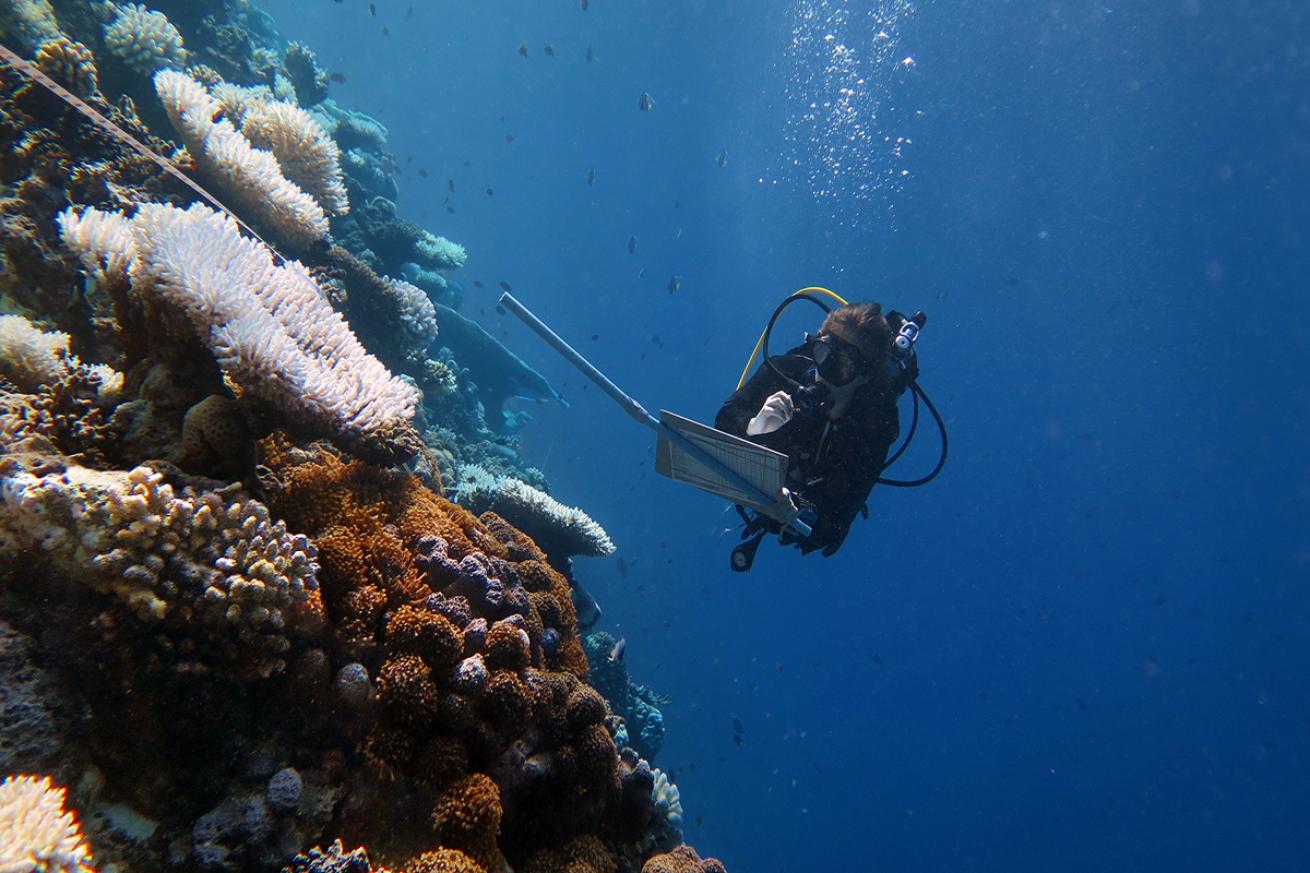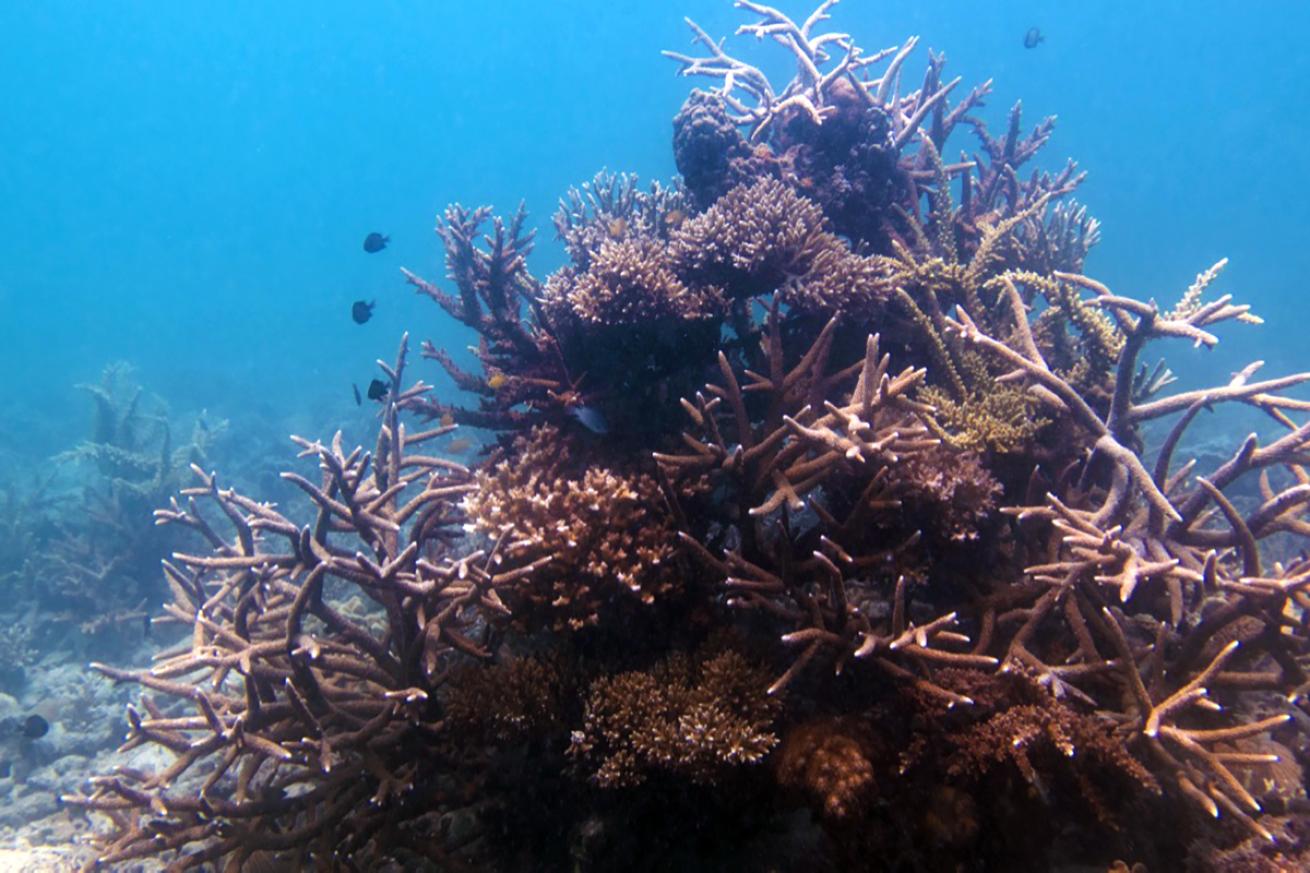Coral Restoration Can Aid Reef Resilience According to New Study
Coral restoration programs can improve a reefs’ ability to bounce back after being damaged, according to a first-of-its-kind study.
Restored reefs have more coral complexity and hard coral cover, “a necessary first step towards increasing reef resilience” long term, writes lead researcher Dr. Margaux Hein, who evaluated four coral restoration efforts across the world for her doctoral research at James Cook University in Australia.
Coral reef health has declined globally over the last few decades due to mass bleachings, intensified runoff pollution and other environmental pressures. Healthy reefs provide coastal protection and support fishing and tourism industries, making their ability to recover of keen interest to seaside communities.

Courtesy Margaux HeinDr. Margaux Hein gathers coral restoration data in the Maldives.
Resilience relies on clarity
Projects are popping up across the globe to heal coral communities. Hein says much of their success will hinge on establishing clear goals before hopping in the water.
A common success metric for restoration programs, for example, is how many transplanted coral survive their first year. But this is not an accurate yardstick of long-term resilience, which derives from a web of factors like coral complexity, health, numbers of young coral and fish populations.
“If you want to bring back fish, you need to start thinking about complexity and diversity from the very beginning,” Hein told Scuba Diving magazine. “If you're focused on endangered coral species, then it's okay to just restore endangered species. But you really need to think of the goals early on in the planning phase.”
In Florida and St. Croix, the programs Hein studied aim to restore populations of endangered acropora.
The species are “like candy” to fish, says Jessica Levy, program manager at the Coral Restoration Foundation in Florida, which participated in the study. Planting acropora does boost the coral’s overall population—but nursing a predator buffet meant lower levels of overall coral health than sites in Thailand and the Maldives. The restoration work examined at those sites focused more heavily on reef biodiversity and complexity, says Hein, with the reefs generally displaying more signs of resilience.
Leavy says the restoration community is starting to take a more holistic view of success. The Coral Restoration Foundation, for one, is shifting from fate tracking (counting which corals live and die) to a mosaic method, which captures a broader picture of reef change.
Increasingly, recreational divers are able to directly contribute to such recovery efforts—nonprofits and dive operators from the Caribbean to Southeast Asia offer nursery dives that let travelers tend to baby coral.
“Don't hesitate to just contact the programs that you're interested in and get involved,” Hein says. “From my experience, they're always looking for volunteers... Once you start doing it, you get really hooked on it.”
A tool, not a silver bullet

Courtesy Margaux HeinFish swim behind a restored coral structure in Koh Tao, Thailand.
“I don't think restoration efforts should happen in isolation,” says Hein, “but rather be integrated within broader reef management frameworks that focus on alleviating stressors and promoting resilience….They're definitely increasing some aspects of reef resilience, but that doesn't mean that it would be enough to combat global declines associated with climate change.”
Climate change is making global coral bleachings more common. Oceans absorb almost one-third of the earth’s carbon emissions, raising their water temperature, which causes corals to die when the water gets too warm. The last 50 years have witnessed three mass die offs, which does not leave enough time for reefs to revitalize before the next hit.
Coral bleaching heavily impacted restoration efforts in Thailand during the study. Nursed sites did, however, fare better after the bleaching than untended reefs. Previous research supports the notion that coral gardening can increase coral counts in tended sites even as population declines across the region.
Anyone can fight global warming by living in an “ocean minded” way, says Levy, who advises taking action by “carpooling, biking, walking, making good choices with your food, and avoiding single use plastic.”
More Coral Restoration:










